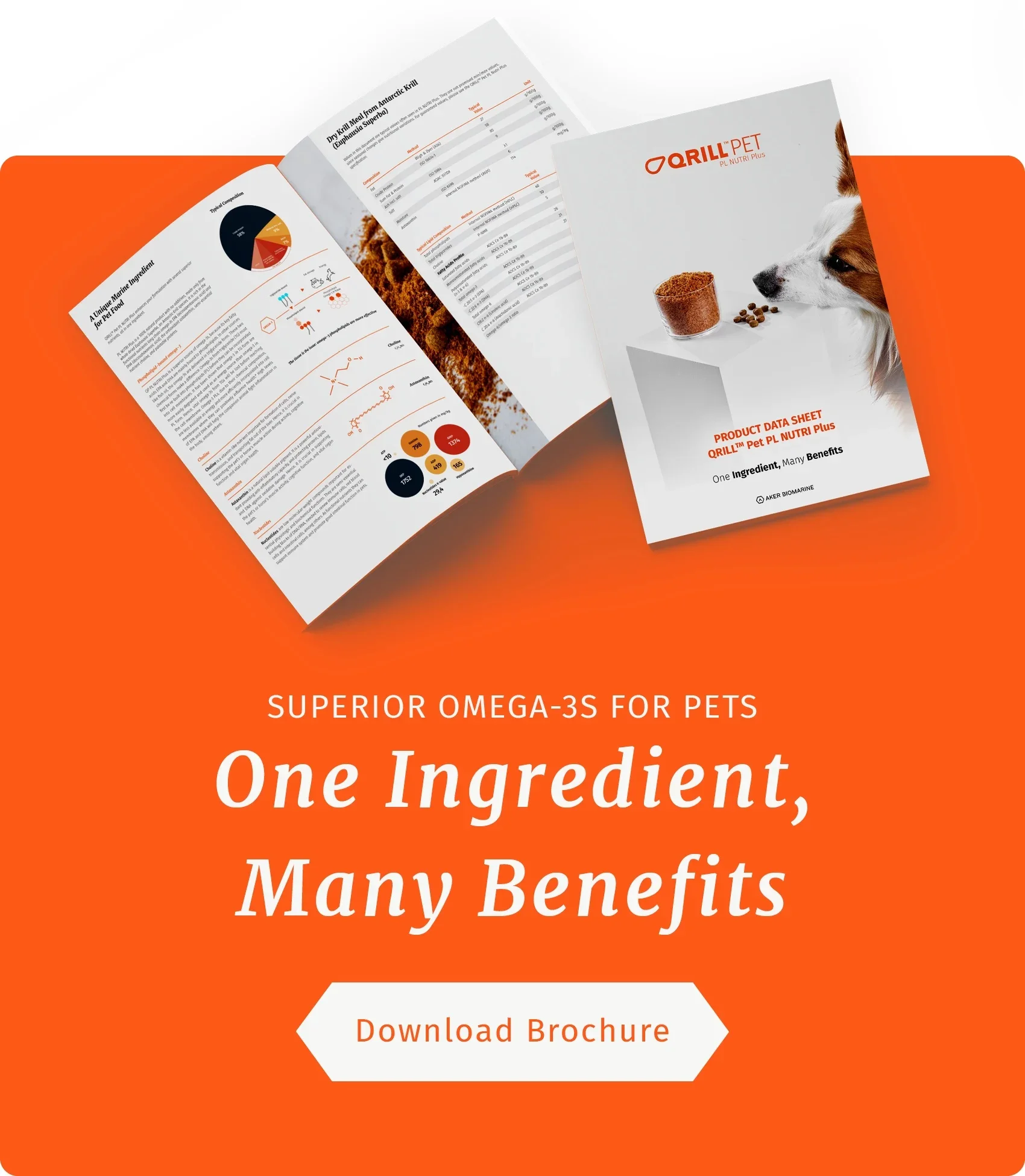Most people that develop pet food know about the importance of omega-3s. We have all heard about the benefits these essential fatty acids have on vital organs, fur and skin of our pets. However, when it comes to choosing the right source, it can be difficult to know which is best.
Omega-3 ingredients in pet food today come in two forms:
- EPA and DHA: Fatty fish such as salmon, sardines and anchovies.
- ALA: Flaxseed, canola, walnuts or soy
Along with these, new and more promising omega-3 sources have been finding their way from the human market to the pet food industry. This is exciting for many pet owners, as they can share a common source to keep both themselves and their pets healthy.
As a pet food manufacturer, there are many different sources available, so it is important to choose the right omega-3 ingredient.
Not quite sure what to look for? We have picked three important points that you might want to consider:
1. Choose the most effective source
Although marine omega-3s are packed with health promoting EPA and DHA, they do not all come in the same form. So, if it is important for you to see quick effects and raise the omega-3 levels of your pet, you should choose a source that can be absorbed more quickly and is directly incorporated into a pet's cell membranes.
Read more about phospholipid omega-3s
An alternative source to common fatty fish ingredients is krill. A unique source from the pristine waters of the Antarctica, packed with omega-3s that are mainly in form of phospholipids. Krill omega-3s are easy on the pet’s stomach and do not cause any digestive discomfort.
2. Choose a sustainable ingredient
When choosing a marine omega-3 source, sustainability should be on top of everyone’s list. In recent years, fisheries have come under scrutiny due to overfishing practices. It is important that we and our pets have access to high quality omega-3s. At the same time, the health of our oceans and planet should be a priority for both business and consumers.
It all begins with the choices that we make. By choosing a sustainable marine source, that is certified by the Marine Stewardship Council, you are ensuring that the marine biomass in our oceans can be kept at healthy levels. Organizations such as the Marine Stewardship Council are constantly working to improve the sustainability of fisheries.
Read about the most sustainable fishery in the world
3. Choose a traceable source
Wouldn’t it be great to know where your marine omega-3s come from? Consumers increasingly care about traceability and the origins of the ingredients, which puts pressure on businesses. More than ever, it is a competitive advantage if businesses are able to control their whole supply chain.
Traceability of omega-3 sources will bring more trust to brands and build long-term loyalty towards brands. Companies that provide this information on their labels will influence the decision consumers make when choosing a pet food that contains a marine omega-3 ingredient.
Let your consumers know that your omega-3 ingredient is:
- Clinically proven as effective
- Comes from a sustainable and traceable fishery
Even better, prove it with the precise catch location from where it has been sourced.

